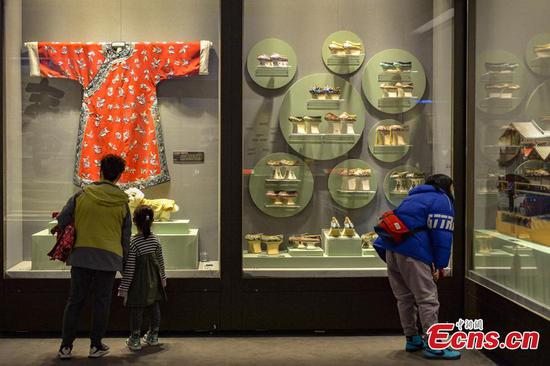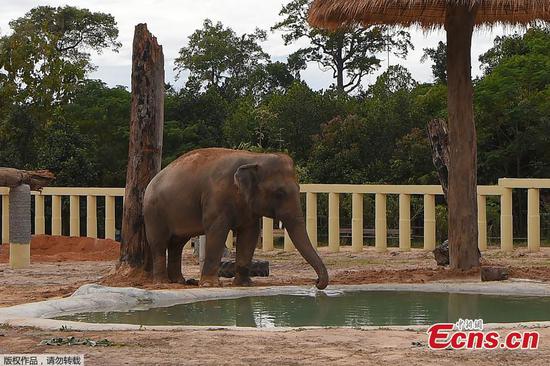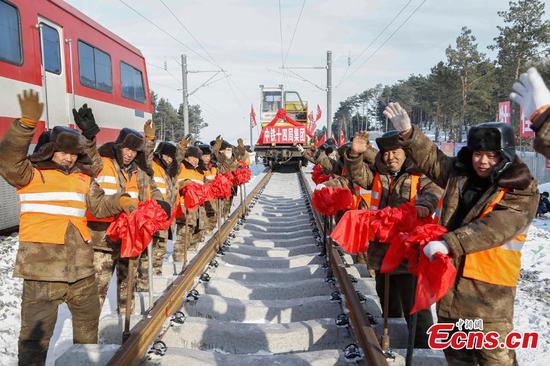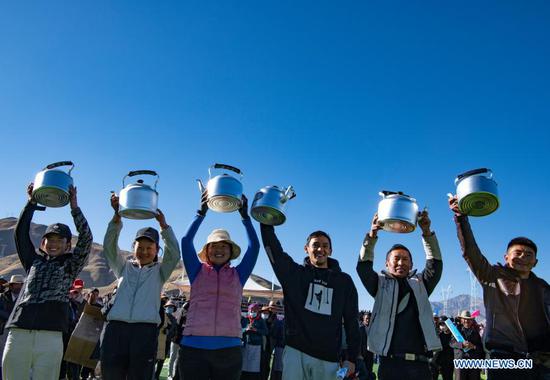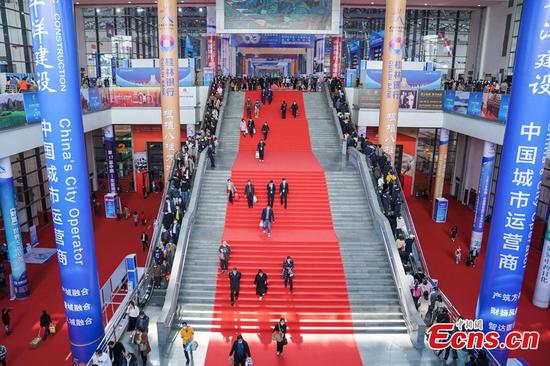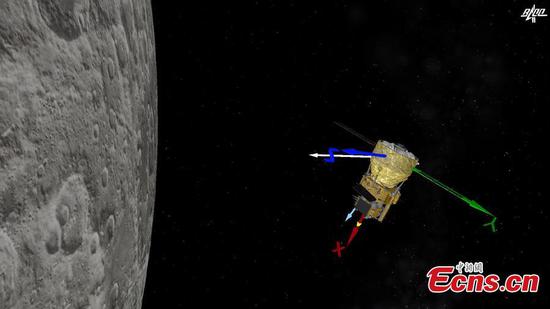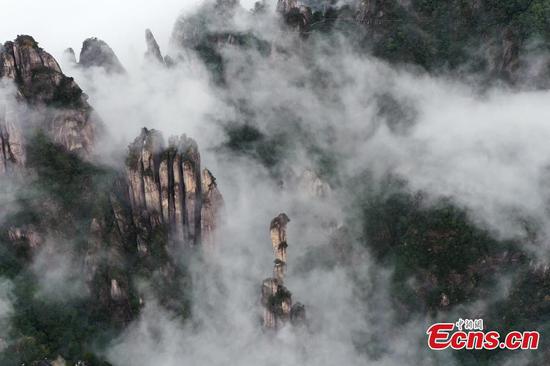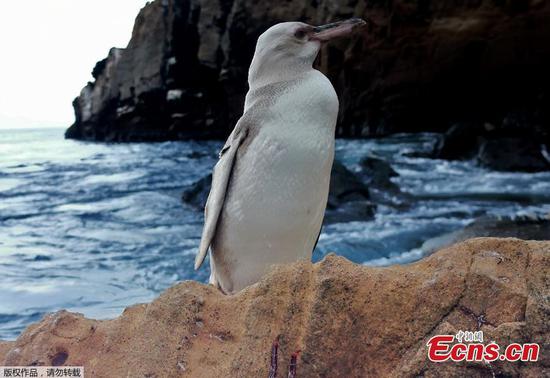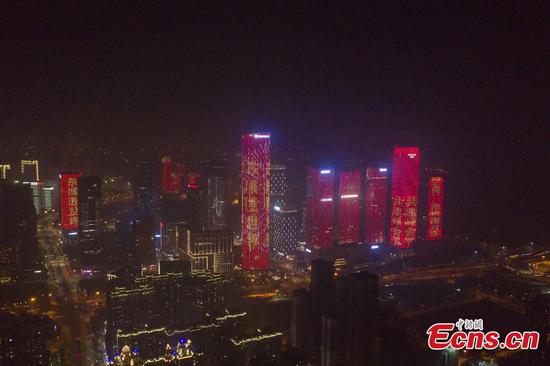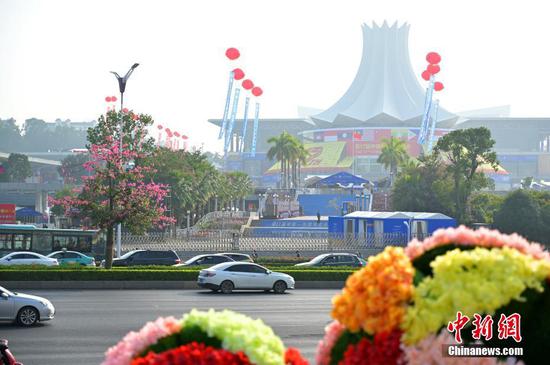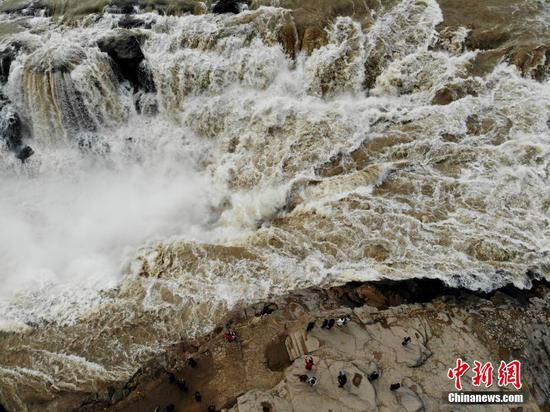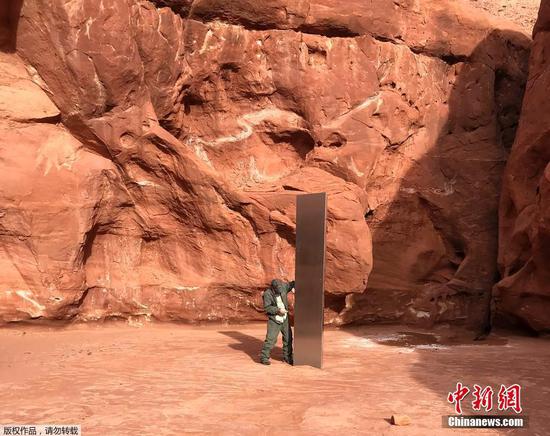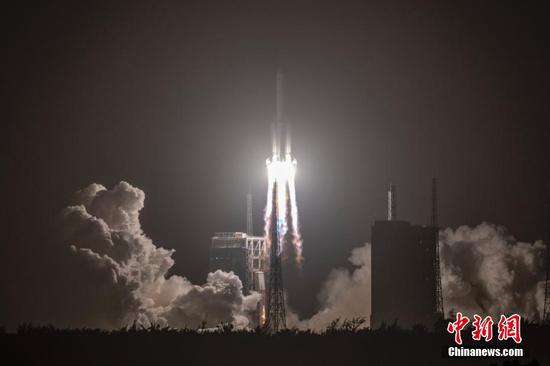
Space workers monitor the status of Chang'e 5 at a control center in Beijing on Tuesday. (Photo/Xinhua)
Docking mission will be automated, with two components using sensors
The next major maneuver for China's Chang'e 5 robotic mission will be an orbital rendezvous and docking between the probe's ascender and reentry capsule, which will be quite challenging, according to project insiders.
Peng Jing, Chang'e 5's deputy chief designer at the China Academy of Space Technology, said the upcoming operation will be the first automated rendezvous and docking for any spacecraft in a lunar orbit.
"The last time two components of a spacecraft rendezvoused and docked with each other in lunar orbit took place in 1972 during the Apollo mission, and that was monitored and controlled by astronauts. This time it will be totally automated," he said. "In addition, there will be delivery of lunar samples from the ascender to the re-entry module, so this process must be executed very accurately and delicately."
Previous rendezvous and docking by Chinese spacecraft occurred in low-Earth orbit hundreds of kilometers above Earth with assistance from navigation satellites, but this time it will take place in lunar orbit nearly 380,000 km away without any external guidance, the designer said, adding that the gravitational environment faced by the spacecraft will be very different from that in low-Earth orbit.
Furthermore, the orbiter-reentry capsule combination is much heavier than the ascender, and if one of them flies too fast or too slow, they will likely collide, so the speed control must be reliable, Peng said.
Wang Qiong, a planner at the China National Space Administration's Lunar Exploration and Space Program Center, said that after its liftoff from the moon, the ascender will need four orbital corrections guided by ground controllers to meet with the orbiter-reentry capsule.
In the rendezvous and docking phase, the two components will rely on their sensors to obtain parameters such as speed and position to determine their maneuvers.
Zha Xuelei, another deputy chief designer of Chang'e 5 at the Shanghai Academy of Spaceflight Technology, said the rendezvous and docking will have only 21 seconds to complete so each move in this operation must proceed strictly on schedule.
Chang'e 5, China's largest and most sophisticated lunar probe, was launched by a Long March 5 heavy-lift carrier rocket early on Nov 24 at the Wenchang Space Launch Center in Hainan province, setting out on the world's first mission since 1976 to bring lunar samples back to Earth.
The spacecraft has four main components-an orbiter, lander, ascender and re-entry capsule.
The spacecraft separated into two parts-the orbiter-reentry capsule combination and the lander-ascender combination-while in lunar orbit early Monday morning.
Late on Tuesday, the lander-ascender combination landed on the moon and soon began to use a drill to obtain underground samples from 2 meters beneath the surface.
It finished the underground operation around 5 am on Wednesday. The craft then used a mechanical arm to gather surface dirt. Samples were packed into a vacuum container inside the ascender.
All collection and packing processes finished at 10 pm on Wednesday, much sooner than expected.
The ascender carrying the samples activated an engine on Thursday to lift itself into an elliptical lunar orbit to prepare for rendezvous and docking with the reentry capsule, marking the first time a Chinese spacecraft has blasted off from an extraterrestrial body. Next, it will transfer the lunar samples to the re-entry module and then separate from the combination.
The orbiter-reentry capsule combination will later return to Earth orbit, where the pair will break up, and the re-entry capsule will conduct a series of complicated maneuvers to return to a preset landing site in North China's Inner Mongolia autonomous region in mid-December.









